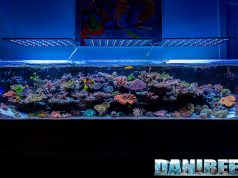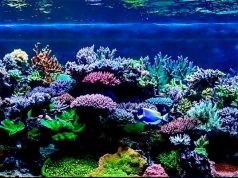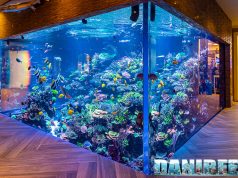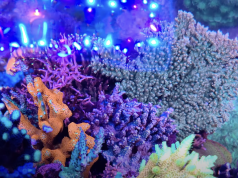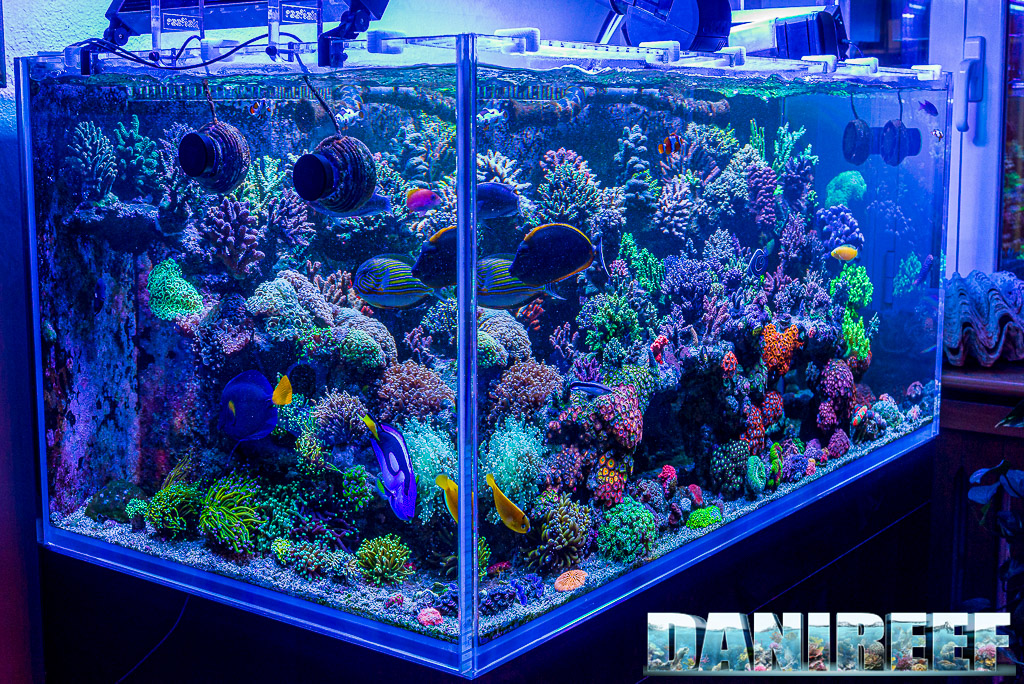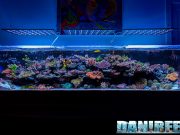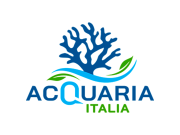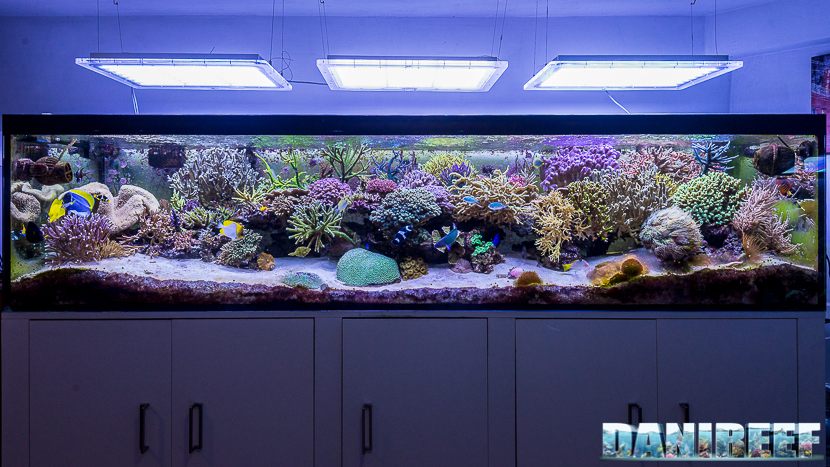
The marine aquarium of Carlo Mondaini is a stunning show. There aren’t more suitable words. It’s a huge aquarium, with very big corals, a lot of fish and some remarkable pieces.
This article is also available in: italiano
We went to Rome to take pictures for you. Actually, to Anguillara Sabazia on Bracciano’s lake, to be precise. There were our friends from the Reefart International group waiting for us, and especially there was this incredible tank.
Let’s start from dimensions. The aquarium has more or less 1.000 liters of capacity, and it measures 250x70x60(h) with glasses of 15 mm. But that’s not all because connected to the principal aquarium there’s a second one, that you will see in the following pictures, of 500 liters, that serves as breeding tank for the zooplancton. So, a system that seems well equilibrated and almost self-sufficient.
The aquarium, Carlo tells, has been thought for SPS hard corals (short polyped stony corals), and it actually hosts over 60 fish. The tank was set up and started on February 2nd 2016 so it just did 3 years.
The technical part it’s managed with a DSB – and I find it weird, because it bases on only 8 cm of sand, with deep holes somewhere, as you can see in the pictures.

The technique
The 250x70x60(h) cm tank with glass thickness of 15 mm and the cabinet were built by the italian company Animal’s House from Barberino di Mugello in the province of Florence.
It has two movement pumps that move the water: a Tunze 6150 of 20.000 l/h and a Jebao RW15 of 15.000 l/h. So we’re talking about a movement equal to 17,5 times the volume.
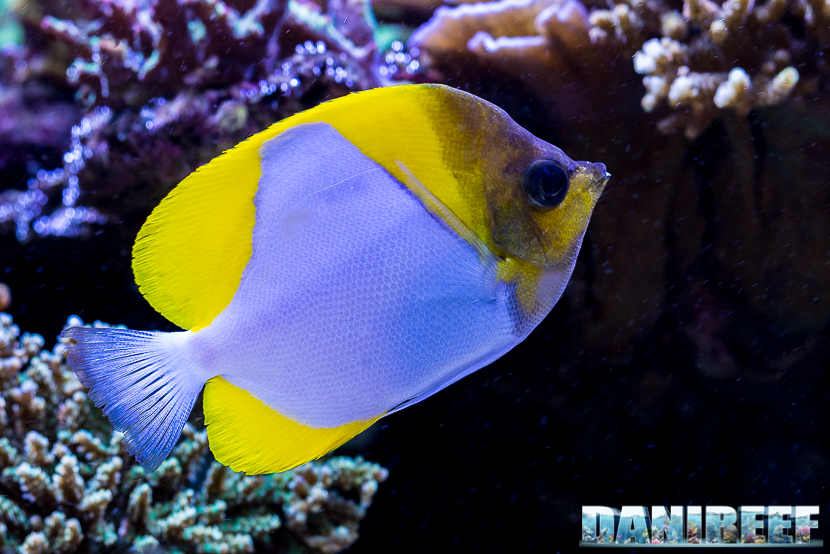
The aquarium has been managed by 3 chinese ceiling lights but now there are 3 GNC AM650, in order to obtain, according to Carlo, a more natural light, even if with less reflections because of the low power LED.

The aquarium has 3 drains that lead to the sump, two of them are channeled into a cryptic zone with 100 kg of living rock. Then they arrive to a second zone with the Tunze Doc Skimmer 9430 with two pumps. In the corner dedicated to the return pumps there’s the Korallen Zucht active carbon, changed once a month.
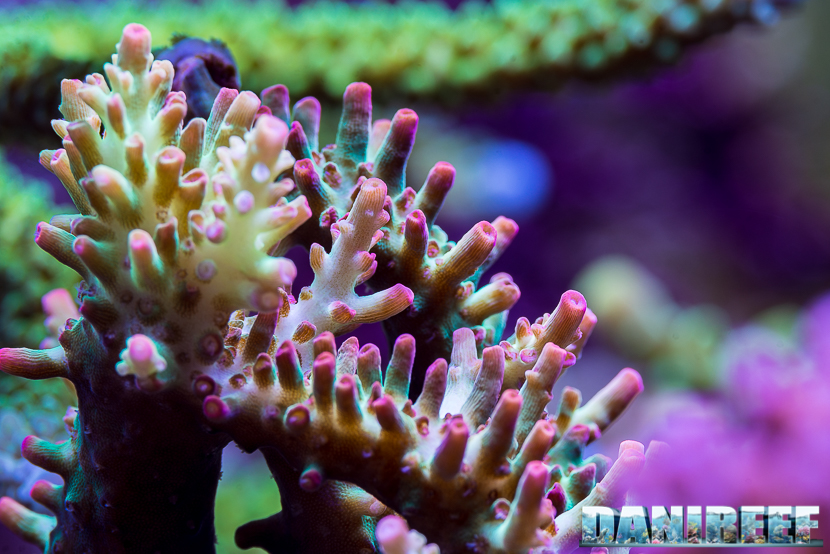
The managing of calcium, carbonates, and basically all the trace elements is done by a DIYcalcium reactor, in this case a reactor built by Yari Contu. The ractor, Carlo says, is underestimated compared to the needs of the aquarium, but before Carlo used the balling Fauna Marin that led to very high costs with a system like this.
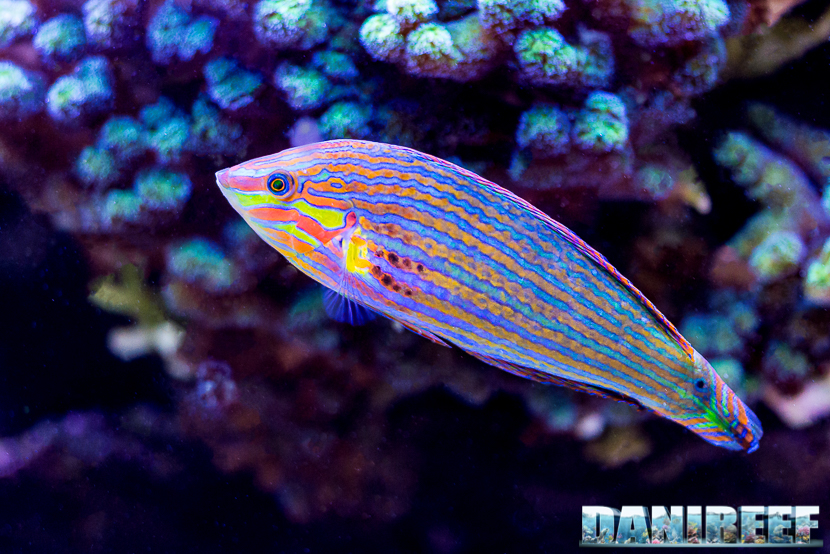
The heating is managed by three heaters of 300 watt by Hydor, while the cooling is managed by a chiller Hailea hc300A that alone is not enough and it’s helped by the conditioner in the room.
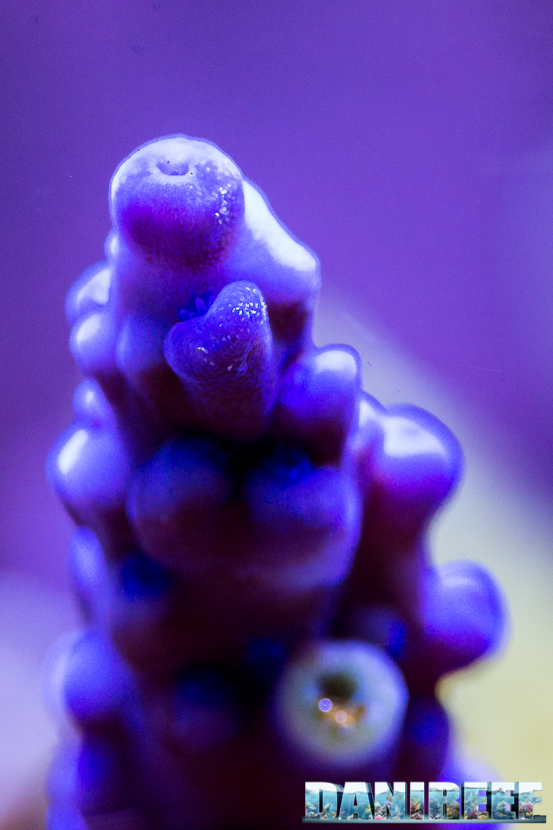
Acropora nasuta
In this aquarium have never been used ozone or ultraviolets. But have been used a lot of types of bacteria trying to increase the total biodiversity. Even today, during the water change routine, once a month, high quantities of bacteria are added.
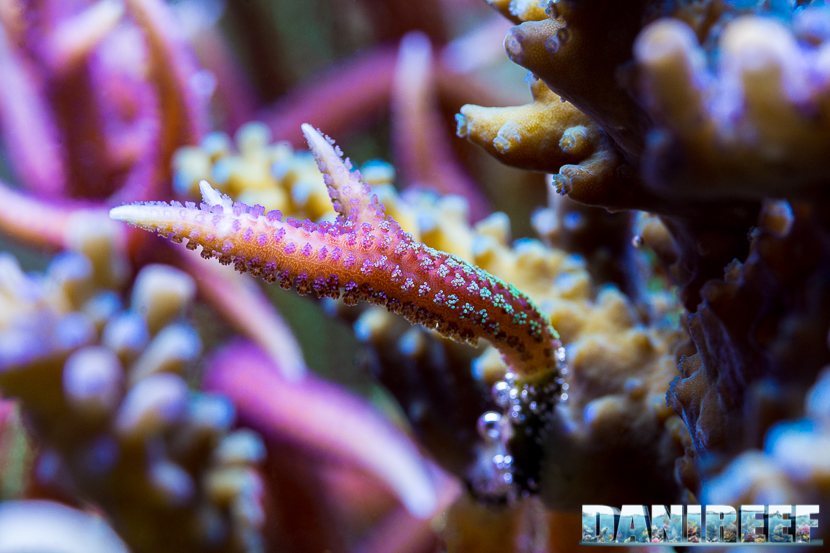
As we have said before, from September 2017 another tank of 500 liters
has been added. This new marine aquarium is managed with 8 T5 tubes of 80 watt, two Tunze Pumps alternating every 6 hours, with LPS and soft corals.
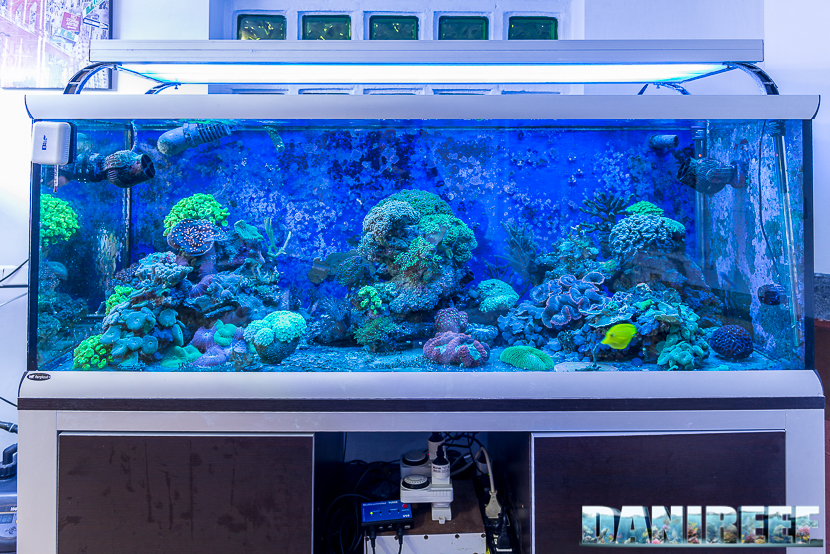
The purpose was to create an hybrid system, with two aquariums connected to each other and managed thanks to the same technique. A system able to contain different animals with different needs. The smaller aquarium is mainly used to breed the zoaplancton, as copepode amphipode that in the ideal environment grows and multiplies and then, with the movement of the pumps arrives to the main aquarium and they become living feed for corals and fish.
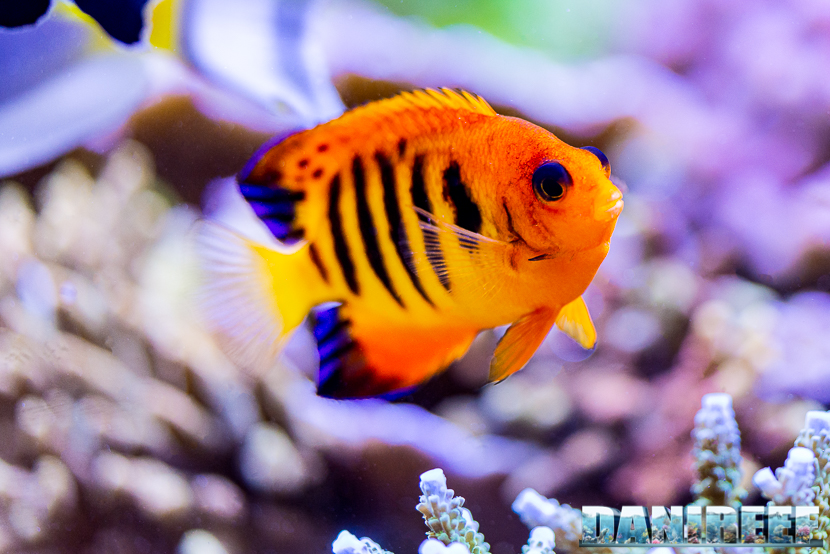
The return pumps are three. Two Newa, of 5.000 and of 6.000 l/h for a total of 11.000 l/h and a Jebao of 10.000 l/h that is used for connecting the two aquariums.
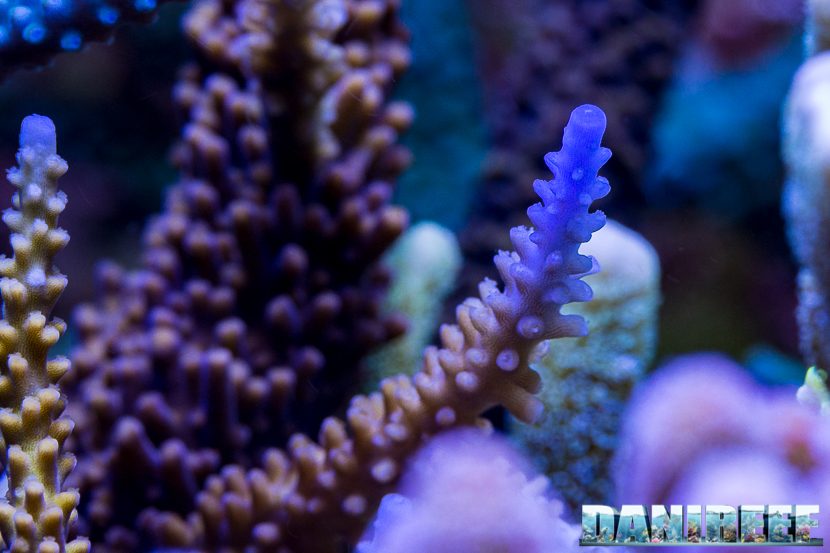
The satisfactions of Carlo Mondaini
Carlo is extremely satisfied of his system, and when he speaks his eyes brighten vividly. He’s proud, but who wouldn’t be with a system like that? In his aquarium Carlo reached an equilibrium and says that the aquarium thanks him for every effort and problem that he had to face in the past. We can affirm that this is the Nirvana of the aquarist.
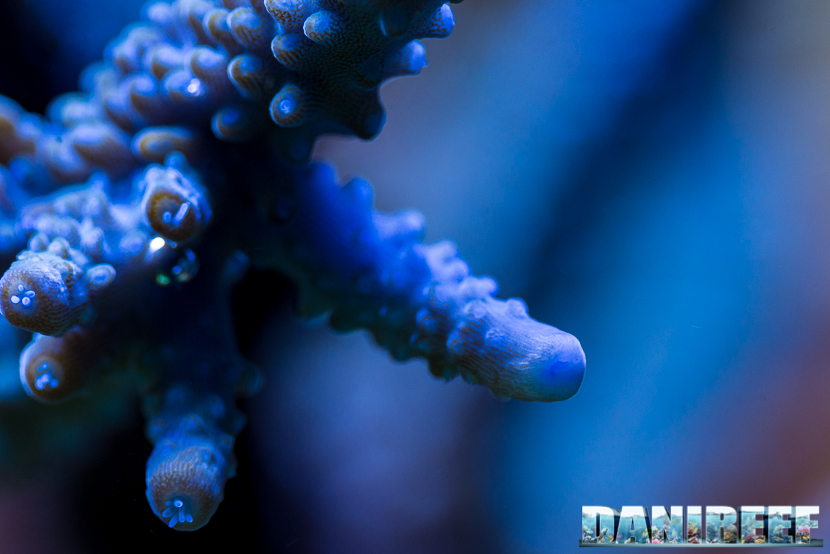
Carlo tells that his experience grew by trying every solution and tool, starting with an algae reactor and the daily production of
phytoplancton and zooplancton. Once started the aquarium, the local production has been stopped.
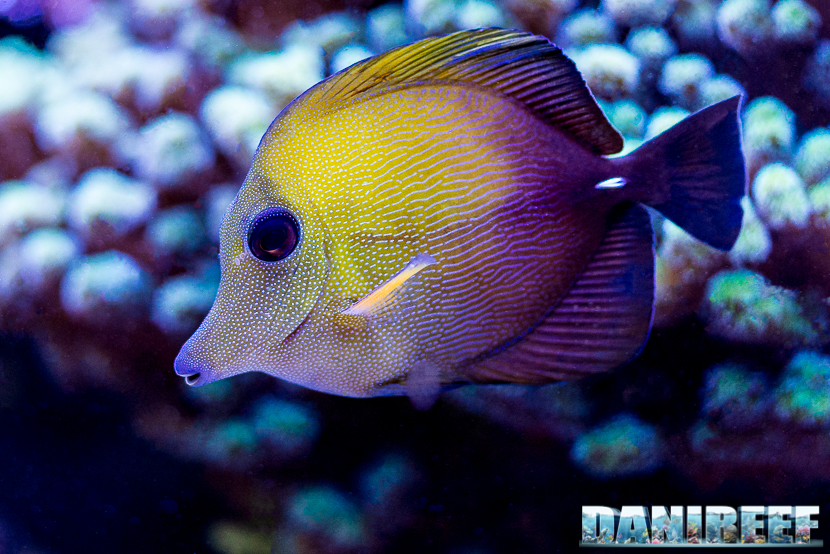
Suggestions and credits
Carlo suggests, to all of us, to keep on experimenting, for the health of our animals, but without pushing too much, and listening to the suggestions of the most experienced, but he warns us against some dishonests and some sellers that aren’t updated.
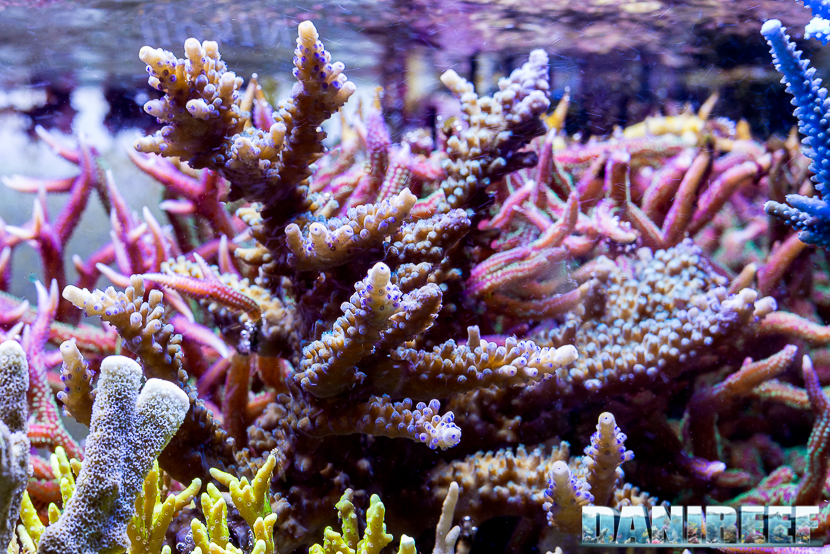
The best friend you can have is a book, Carlo continues, because, how it’s said: “verba volant, scripta manent“.
And now, a special thanks goes to Danilo Ronchi that mentored me in the first steps of the realization of the tank and thaks to all the people of Reefart International (link), I thank one by one the mods and admins of the group I collaborate with, for their passions and the exchange of opinions and experiences that make us grow in this wonderful world.
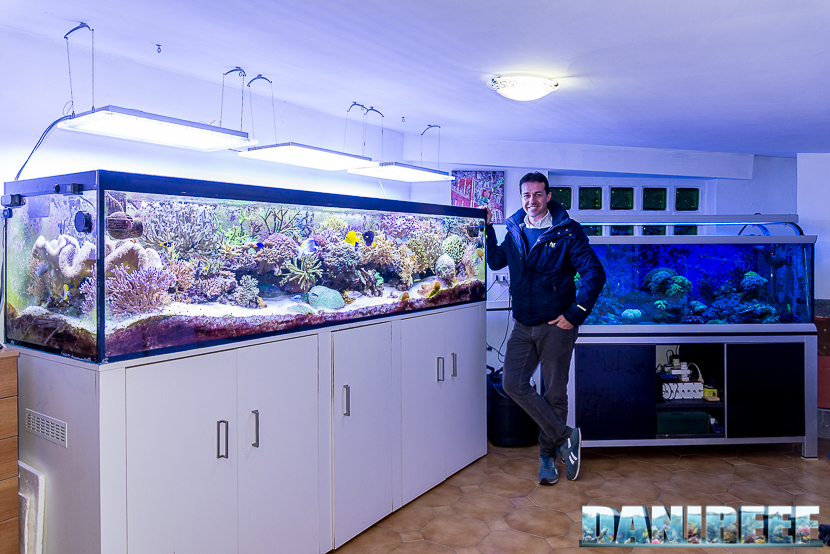
The final comment by DaniReef
The aquarium is amazing, I wrote this many times in this article. I like it particularly, because it has both healthy and beautiful corals. But what hits me the most is the harmony of the reef, that makes a domestic aquarium a real piece of nature. There aren’t pushed colors, but the sense of general equilibrium. Moreover there are stunning fish, like surgeonfishes, butterfly fishes and centropyges. All completely healthy. And what labridae!
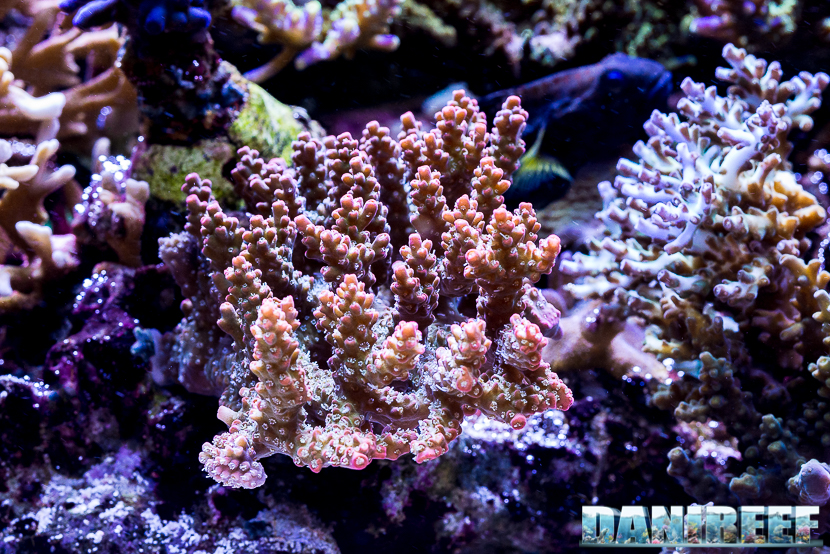
From the technical point of view, according to me, the aquarium could grow a little more. The movement given by the pumps is a bit low, it’s about 17,5 times the amount of liters: if it could reach, without damaging the sand, 25/30 times, the SPS corals would benefit. Sure, with an aquarium with so many corals isn’t easy to add pumps, but this is with no doubts the point where Carlo could work on in order to improve his beautiful aquarium.
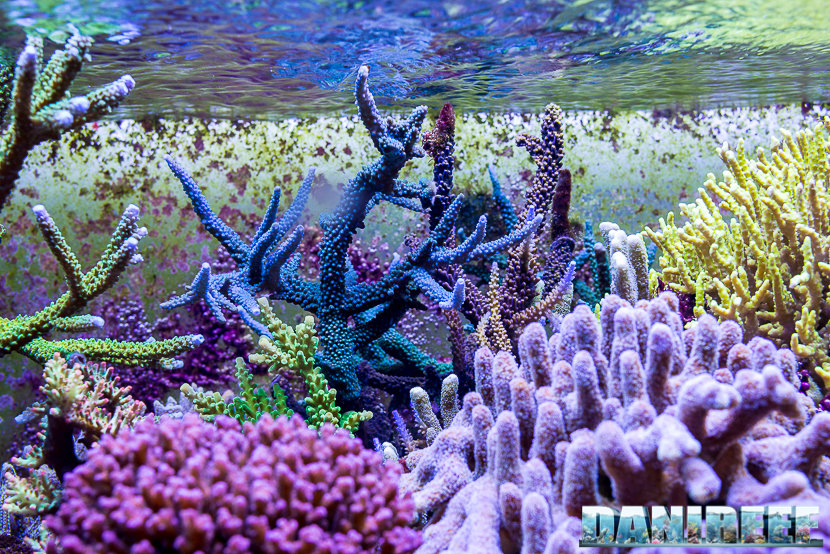
The two return pumps have overall a flow rate of about 11.000 l/h, more than adequate to the total liters of the aquarium and the used skimmer.
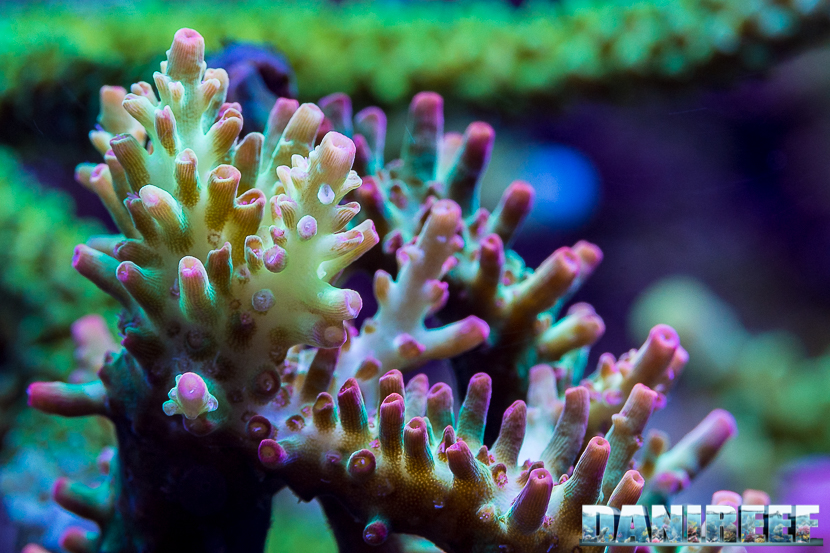
After all, this aquarium has an adequate flow rate, high level lighting, specific feed protocol. Just the movement is slightly underestimated.
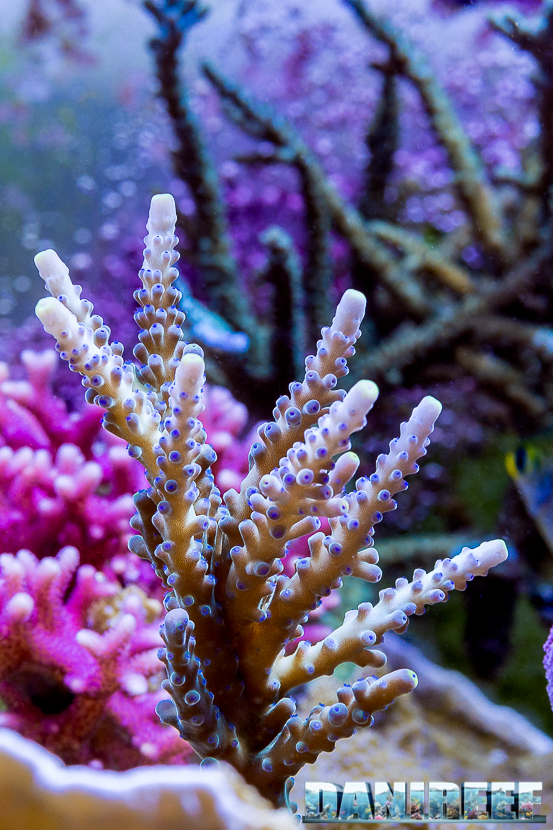
Now you just have to see the other pages (click here) for the picture of the corals and the fish and the video we made.






